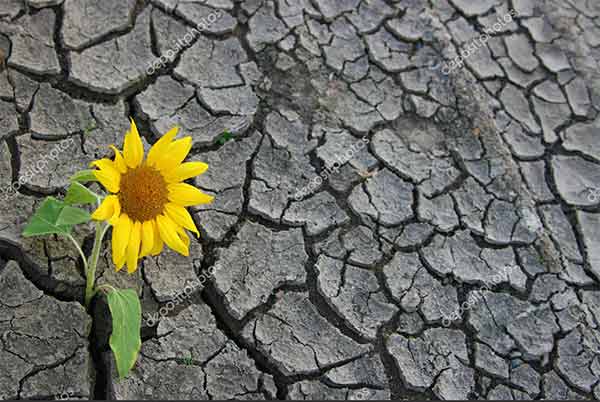ACTIVE HOPE

When I look at the crises unfolding around our world, and all the good work being done to end these crises, I go back and forth between feelings of hopelessness and hope. There are reasons for both. When I’m at the hopeless end of the spectrum I remind myself that hopelessness leads to inactivity, paralysis. And giving up is exactly where the Powers That Be want us in order for Business As Usual to continue. I believe that if we allow our thinking to go into hopeless territory, and park there, we really join the ranks of the destructive forces. If we are seeking to bring about a world of caring, equity, health for all living beings and the planet, being paralyzed will not get the job done.
I see many, many projects around the world that are bringing about a new way of being on our Earth that supports and enhances life for all. There are countless projects that give me hope. For example, when I say that the Fish in the Fields Project gives me hope, what I mean is I see Life rising up and creating a new thing. It gives me the sense of possibility. I gives me evidence and the belief that the forces of Life will overcome the forces of death and destruction.
I wonder if we could say that hope is the heartbeat of Life. Hope is Life wanting to express itself, to expand. Even when we do not feel hopeful we can still keep working for a new vision that expresses and enhances Life. The truth is that we don’t know what’s going to happen. We don’t know anything. So why not go for what we want?
In the end, whether I feel hopeless or hopeful, I find it doesn’t really change how I go about my life because I will do whatever I can to bring about the new vision of a healthy world we all long for. Since the future is uncertain, I’d rather put out good, life-serving energy than succumb to negativity.
Here are other’s thoughts on Hope
Hope is not what we find in evidence. It is what we become in action.
—Motto of the Small Planet Institute
I wouldn’t be able to get up in the morning if I didn’t believe there is something we can do about gaining economic justice for people.
—Nikki Silvestri, Executive Director of Green For All.
And we need hope. In Judaism, we engage in hope. Hope is not a wish; it's not something we think about. Hope is something we do; it is something that we are. We don't have hope, we become hope. And for that hope to become real, we need a vision. So religious communities can and must create a shared, democratic vision through open dialogue.
So, may God help us to actively become hope. May God help us all accept our responsibility. May God help us refind the God of nature and refind God in nature. May God help us learn to rehear the global choir. May God help us create a shared vision. May God help us to not stand idly by. And may God help us to connect personal salvation with global fulfillment. May such be God's will. Amen
—Rabbi Neil Amsywch of the Temple Beth Shalom
People say, what is the sense of our small effort? They cannot see that we must lay one brick at a time, take one step at a time. A pebble cast into a pond causes ripples that spread in all directions. Each one of our thoughts, words and deeds is like that. No one has a right to sit down and feel hopeless. There is too much work to do. —Dorothy Day
Whatever our vocation, we stand, beckoning and calling, singing and shouting, at the gates of Hope. This world and our people are beautiful, and we are called to raise that up—to bear witness to the possibility of living with the dignity, bravery, and gladness that befits a human being. This may be what it is to “live our mission.”
Our mission is to plant ourselves at the gates of Hope—not the prudent gates of Optimism, which are somewhat narrower; not the stalwart, boring gates of Common Sense; not the strident gates of Self-Righteousness, which creak on shrill and angry hinges (people cannot hear us there; they cannot pass through); not the cheerful, flimsy garden gates of “Everything is gonna be all right.” But a different, sometimes lonely place, the place of truth-telling, about our own soul first of all and its condition, the place of resistance and defiance, the piece of ground from which you see the world both as it is and as it could be, as it will be; the place from which you glimpse not only struggle, but joy in the struggle. And we stand there, beckoning and calling, telling people what we are seeing, asking people what they see.
—The Reverend Victoria Safford
More reflections on Hope
“Despair is Not a Strategy, 15 Principles of hope," by Abby Hoffman
My January Newsletter, "Active Hope"
Back to Blog